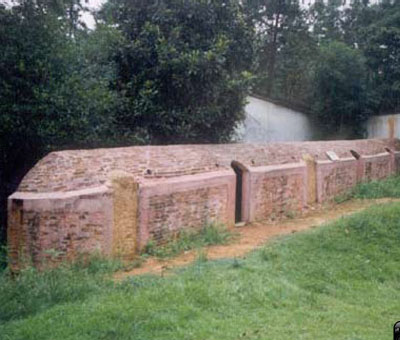Lofty Lushan Mountain
Temples in Hidden Places
On the First of August
Wheels by the Water
Share your travel story with regional@chinadaily.com.cn
Construction of Jingdezhen traditional porcelain workshop and kiln
( chinaculture.org )
Updated: 2011-09-13

A traditional porcelain workshop and kiln
I. Origin
Jingdezhen (Jingde Town) is located in northeastern Jiangxi province. As the world-famed ceramic capital, Jingdezhen has a long history of making ceramics and a rich cultural heritage.
According to historical records, Jingdezhen, formerly Xinping, began to produce pottery during the Han Dynasty. It is evident that pottery was first made in Jingdezhen during the Han Dynasty. In the first year in the Jingde Reign of the Song Dynasty (AD 1004), the royal court decreed the city make porcelain wares for imperial use with the wording "Made during the Jingde Reign", printed on the bottom of every piece. Hence the city got its name "Jingdezhen".
II. Porcelain workshop
The porcelain workshop in Jingdezhen, a special place for shaping operations, is a courtyard architecture composed of three individual buildings: the main hall, the granary (a storehouse of raw materials) and the clay house, of which the main hall is mainly used for shaping operations and usually faces south. The granary is looking to the north. The two buildings are parallel with each other.
The clay house is located at the western end of the main hall and extends southwards till it is joined to the granary. The clay house is mainly for the aging and refining of clay.
In the middle of the structure is a rectangular yard, surrounded by walls.
Under the roof of the main hall are wooden racks. The two groups of wooden racks are joined with wooden rods. The rack structure is a ready-make rack for drying molds.
A drying-rack basin (also called a drying-rack pond) is dug out in a place between the inner yard and slope. The drying-rack basin is composed of mold-drying racks and the water basin.
The mold-drying racks set up above the basin are mainly for adjusting the biscuit-drying temperature by changing vapors.
There is only a corridor between the drying-rack basin and the mold racks in the main hall and it is quite easy for potters to turn around quickly when they shift the long board. It is also convenient to move the mold quickly when it rains, saving time and effort. Such a rational design is perfect.
III. Kiln
The famous Jingdezhen kiln was set up and improved by drawing from the best of the Dragon Kiln, the Stairs Kiln and the Gourd Kiln and the Mantou Kiln in the North.
It has no type of shape bricks, complicated fume extractors, or any auxiliary equipment in its structure. The gaseous atmosphere and temperature in the kiln is appropriately controlled only by judging the time and amount of wood to throw on the fire. . It has overcome the shortcomings of the Dragon Kiln and the Stairs Kiln both of which have difficulties in heating up the tail sections, and the high temperature difference of the Gourd Kiln. Therefore, the Jingdezhen Kiln has held an important position in the history of porcelain kilns in China.
Nowadays, few of the porcelain workshops in Jingdezhen are set up completely adhering to these design criteria. The majority of traditional kilns and workshops have been dismantled in the process of industrialization and urbanization, while old builders have passed away. Statistics show that only 23 traditional workshops exist in Jingdezhen. The traditional techniques and architecture are in imminent need of rescue.




